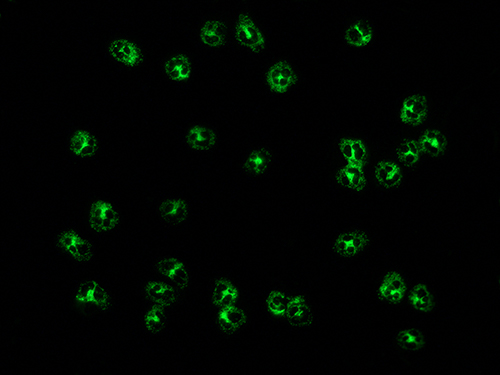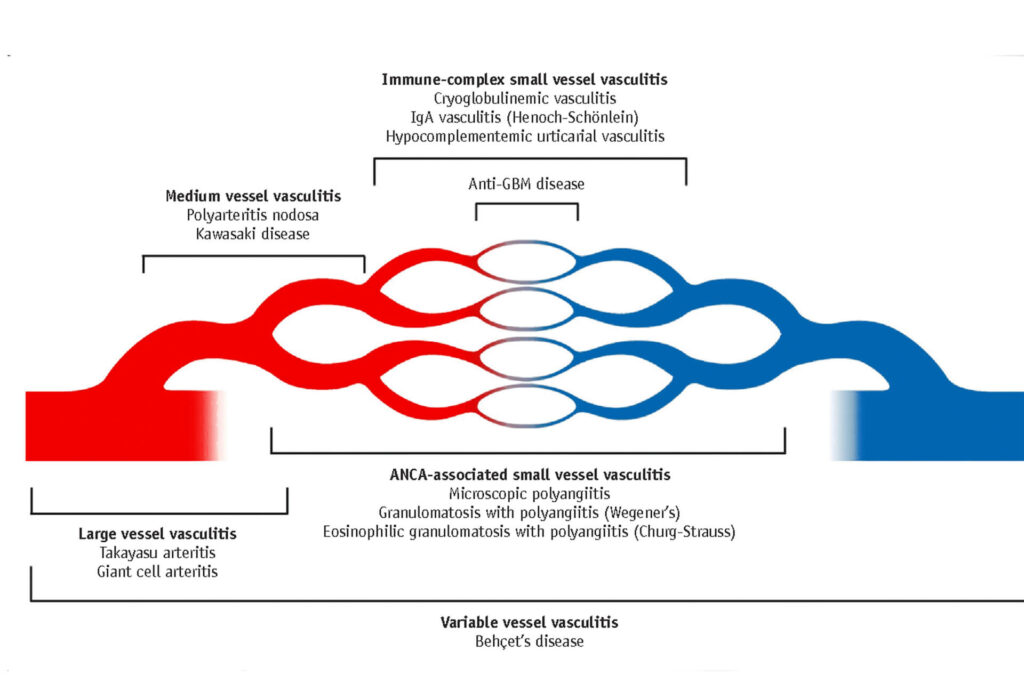AAV - ANCA Associated vasculitis
ANCA vasculitis refers to a group of three diseases in which a link has been established between the disease and the presence of so-called ANCA in the blood. These three diseases are GPA, MPA, and EGPA.
In three forms of vasculitis, a link has been established between the disease and the presence of ANCA (anti-neutrophil cytoplasmic antibodies) in the blood. These three conditions are GPA, MPA, and EGPA, and they mainly affect the small blood vessels.
We therefore explicitly refer to the group GPA, MPA, and EGPA on this website as ‘ANCA Vasculitis’.
Doctors and researchers usually refer to the same group as AAV (ANCA Associated Vasculitis).
Much vasculitis research focuses specifically on this group, and GPA and MPA are often considered together because they are very similar.


The so-called Chapel Hill classification defines the different types of vasculitis according to the size of the blood vessels affected.
LARGE VESSEL VASCULITIS (LVV)
- GCA Giant Cell Arteritis (Arteritis Temporalis)
- TAK Takayasu Disease
MEDIUM VESSEL VASCULITIS (MVV)
- PAN Polyarteritis Nodosa
- KD Kawasaki Disease
SMALL VESSEL VASCULITIS (SVV)
- GPA Granulomatosis with Polyangiitis (Wegener’s)
- EGPA Eosinofile Granulomatosis with Polyangiitis
- MPA Microscopic Polyangiitis
(collectively referred to as ANCA Associated SVV)
- Anti GBM Disease (Good Pasture)
- IgA vasculitis (Henoch-Schönlein)
- CV Cryoglobulinemic Vasculitis
- Anti C1q vasculitis
(collectively referred to as Immune Complex SVV)
VARIABLE VESSEL VASCULITIS
- Behçet Disease
- Cogan’s Syndrome
SPECIFIC ORGAN VASCULITIS
Cutane leukocytoclastic angiitis (CLA), Cutane Arteritis, Primary CNS vasculitis, Isolated Otitis, and other.
